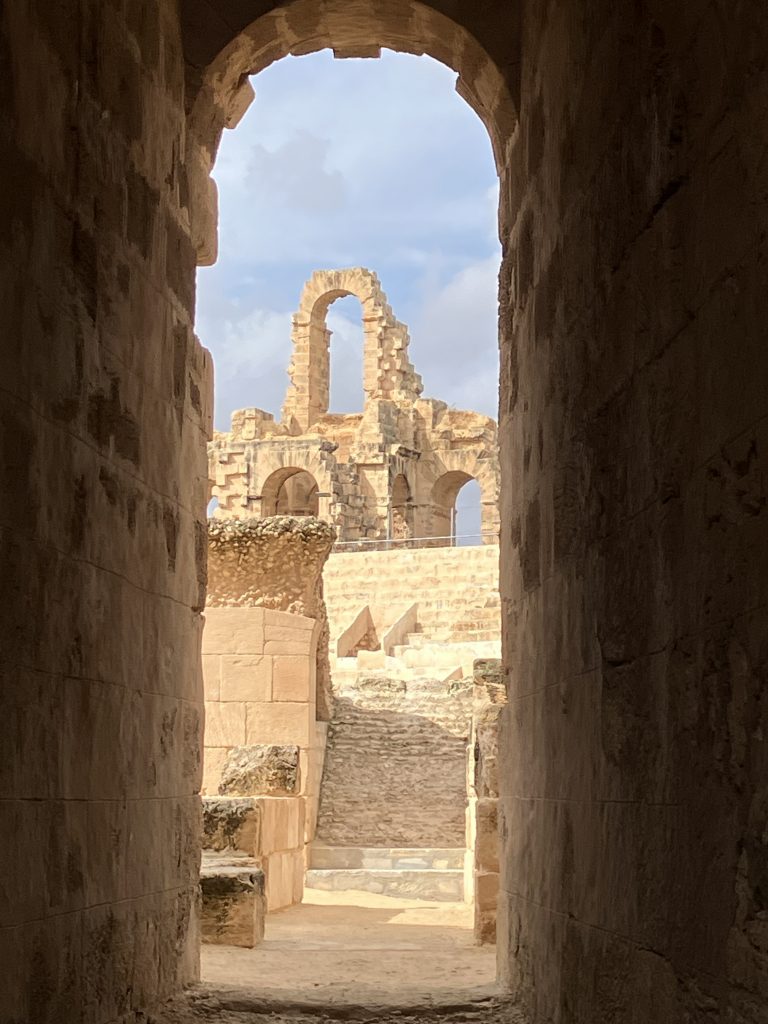
We had been scheduled to do a two day tour out into the Sahara, but the tour bus never showed up for a 5 AM departure, ugh. We had no other plans (and I wasn’t in the mood for more boat work), so we rented a car to do a day’s worth of sight seeing.

El Djem is less than two hours away from Monastir. The main attraction of the town is the famous Roman amphitheater built in 238 AD. With a capacity of 35,000 spectators, it’s one of the largest and best preserved buildings of its kind in the world.

Unlike the Colosseum in Rome, but similar to the one in Pula that we visited last season, in this amphitheater there really aren’t crowds in this place, and you have it mostly to yourself. Despite erosion and some destruction, things are well preserved and you can envision the spectator events that were held here.
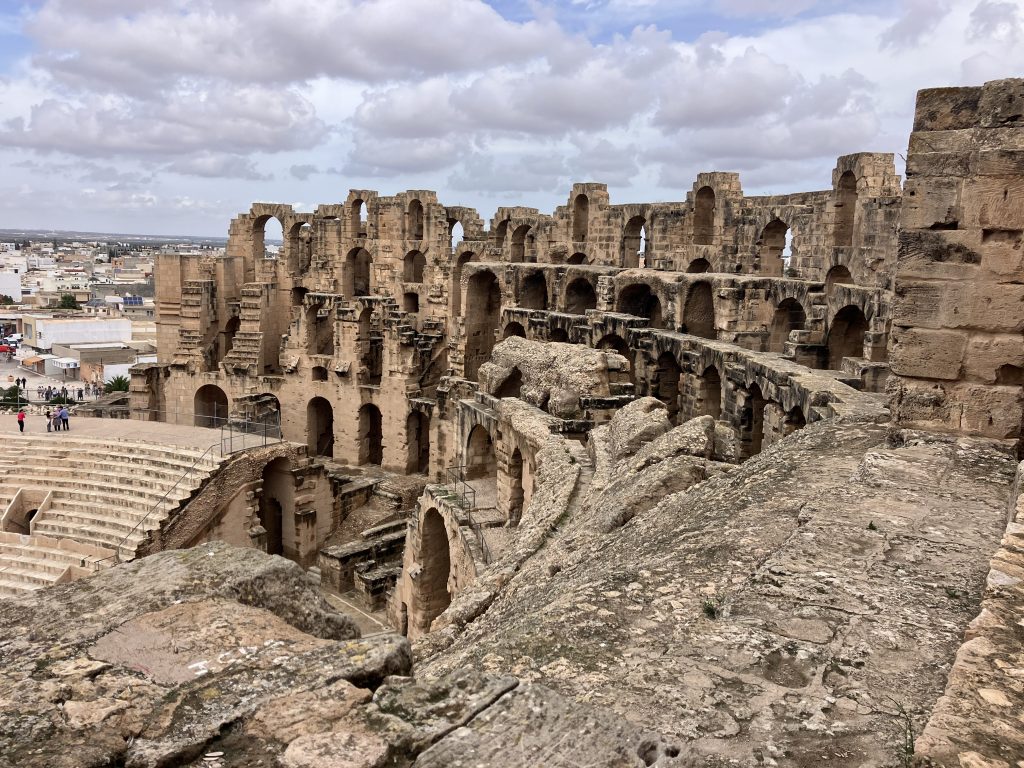
As with any major structure that has survived thousands of years, it’s had more than one use. Along with hosting events, the amphitheater was believed to have served as a fortress and housed the population during attacks of the Vandals and Arabs in 430 and 647. It was even used for saltpeter manufacturing and grain storage in later years.
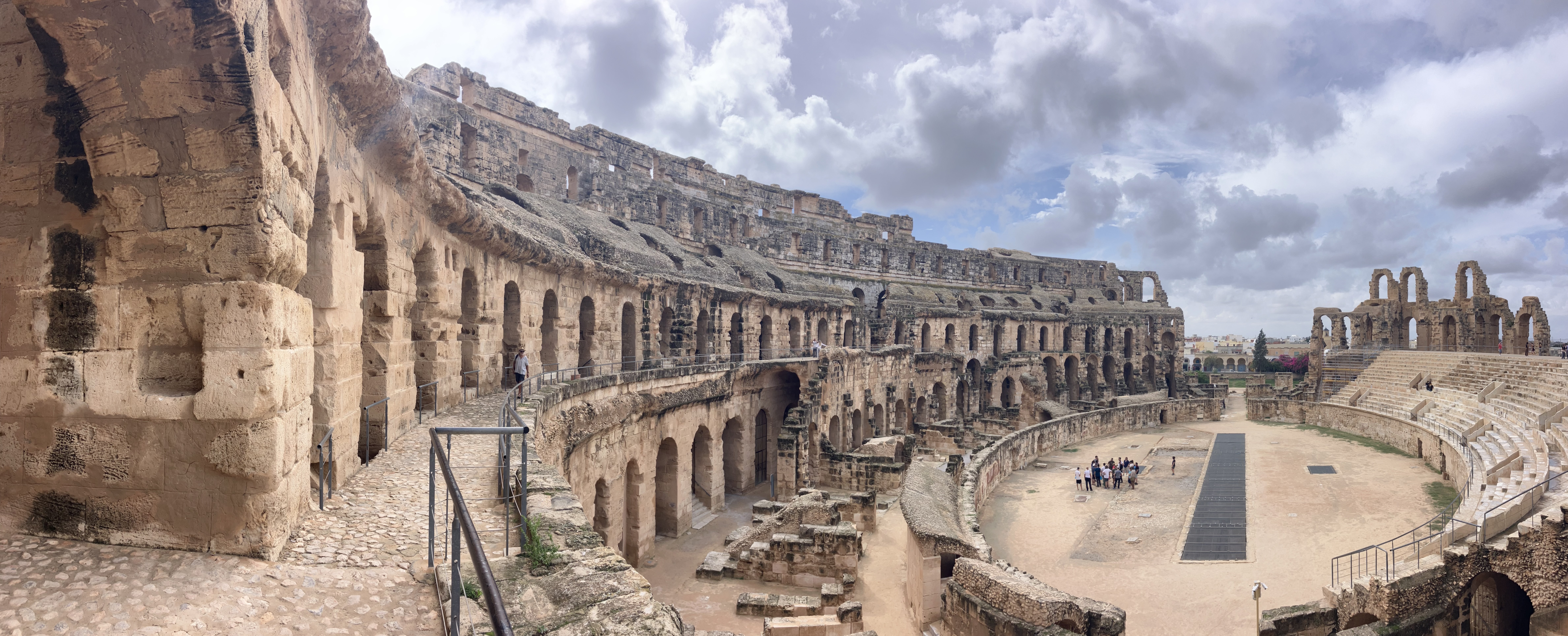
In more recent history the amphitheater has been used for movie sets. We had just re-watched Life of Brian, filmed mostly in the Monastir Ribat. A few of the scenes were shot here as well.
Though I watched it at the time, I didn’t remember that an episode of the Amazing Race ended in this very amphitheater.
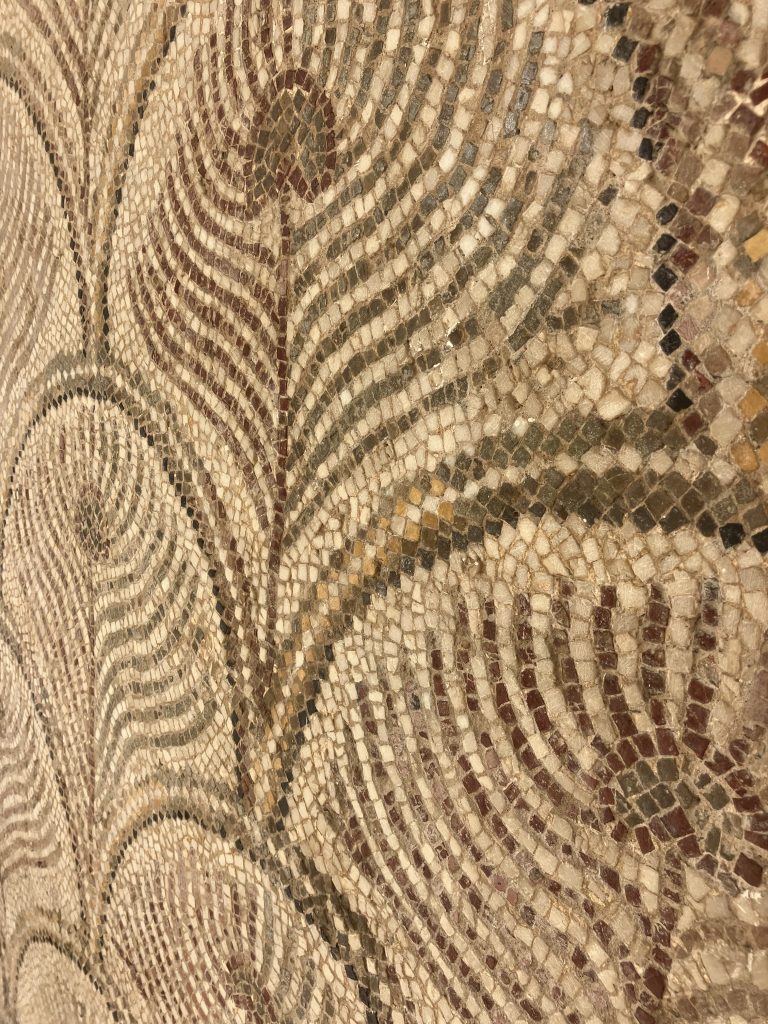
We had extra time after visiting the ampitheatre, so we headed over to the El Djem Museum. The museum is on the site of one of many Roman villas that existed in the area. As artifacts have been discovered, they have been moved to this central location for preservation and display.
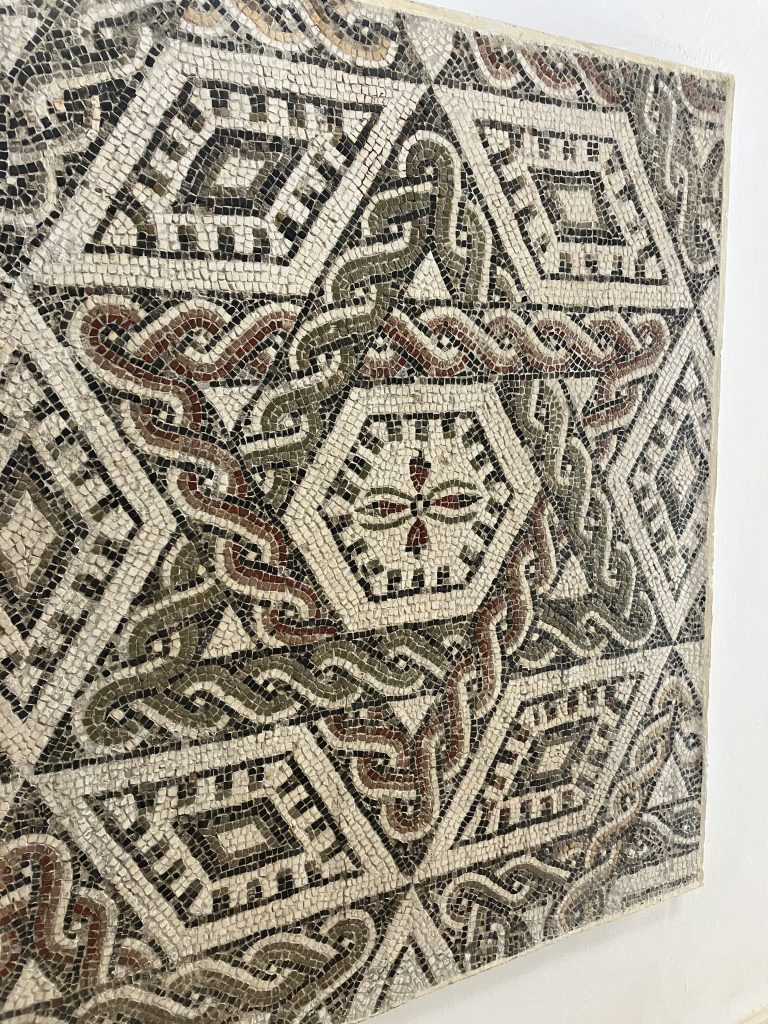
The mosaics of the time were simply exquisite, and were on display everywhere we looked. One particular display showed how the mosaics were preserved and lifted to be displayed in other places (ie. On the wall of a museum rather than the original villa floor).

As the museum is on the site of a former villa, you can move from room to room, getting an idea of life during Roman times.
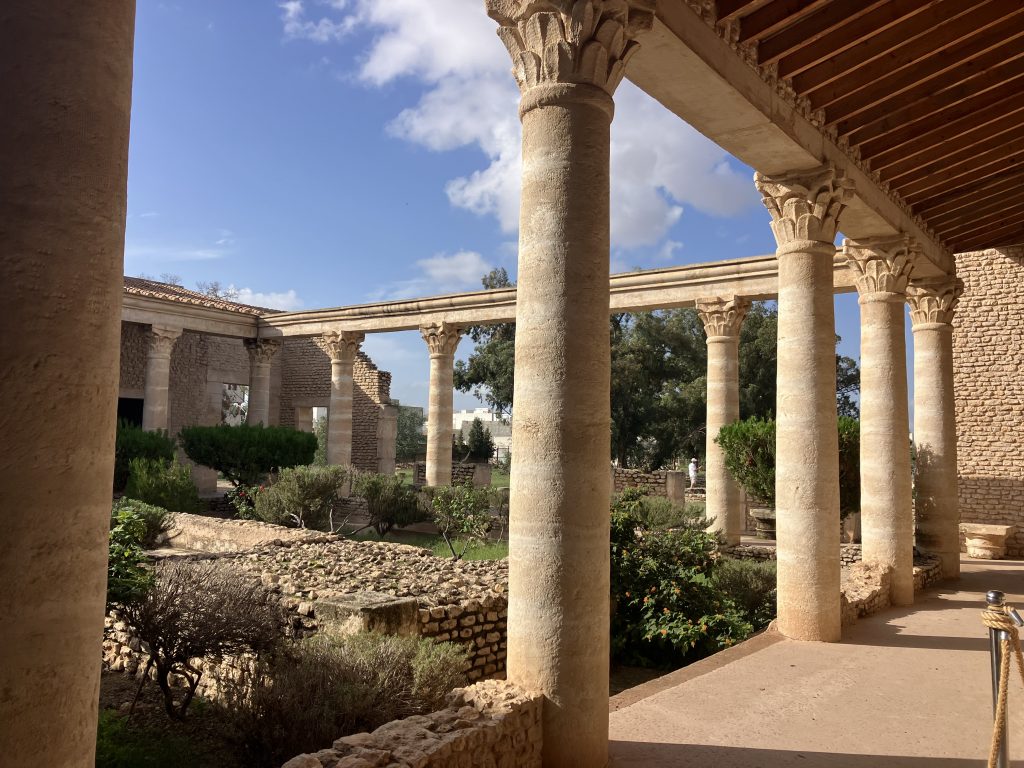
The museum even includes an archeological park of sorts – the ruins of three additional villas whose footprints you can explore.
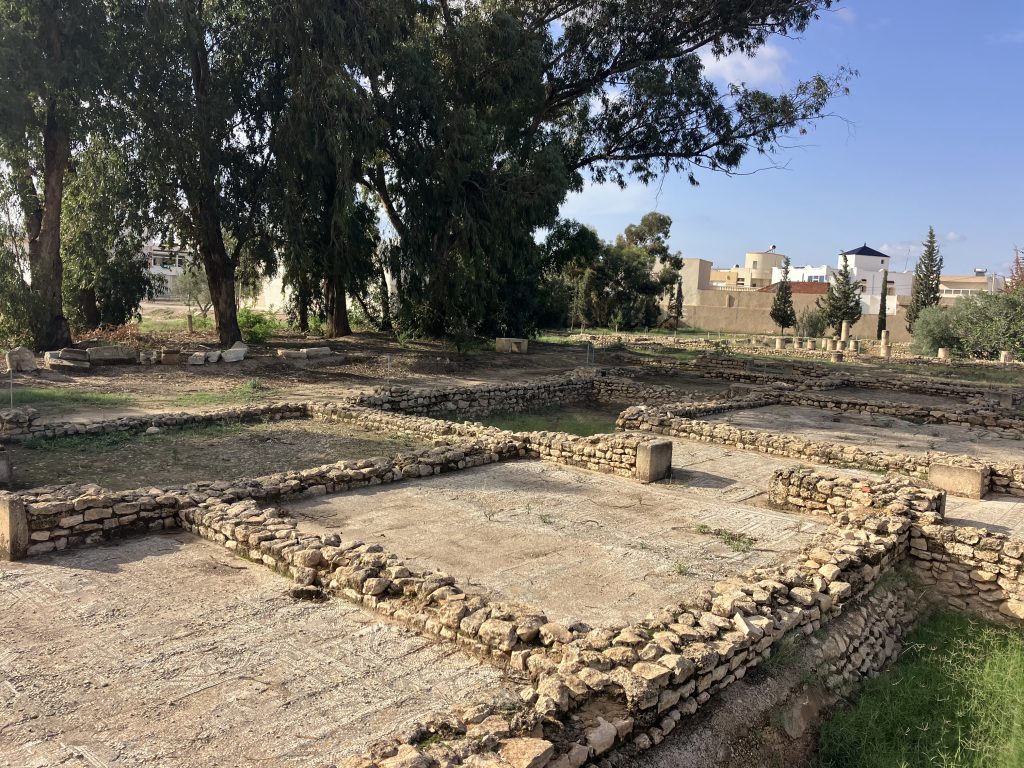

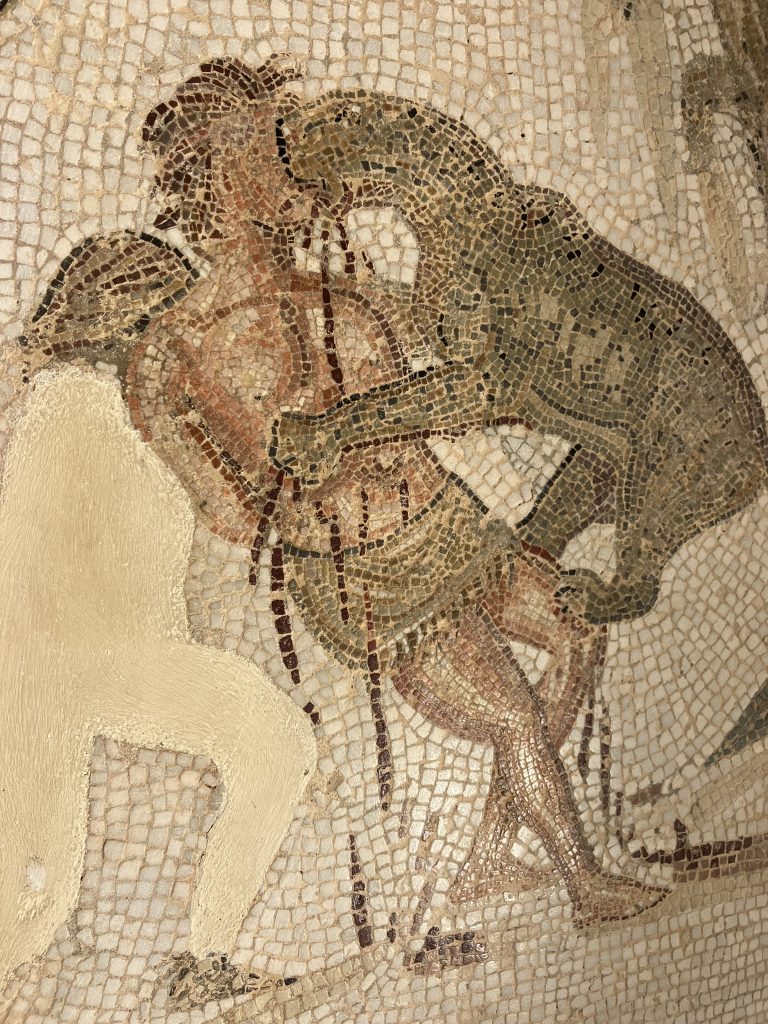

Recent Comments